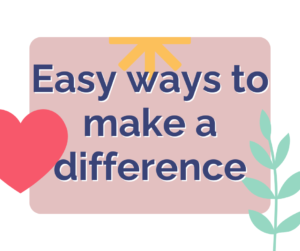Reset Your Nervous System

7 Everyday Activities That Naturally Reset Your Nervous System (And How to Bring Them Back)
Modern life has stripped away many of the simple, physical activities that used to naturally regulate our nervous systems. With screens, automation, and convenience ruling our routines, we’ve lost built-in ways to process stress and ground ourselves. But the good news? Many of these practices can be reintroduced, offering powerful ways to restore balance without drastic lifestyle changes.

Here are seven everyday activities that used to be part of life—and how you can bring them back for a healthier nervous system:
1. Cooking Meals from Scratch
In the past, preparing food wasn’t just a necessity—it was a rhythmic, sensory-rich activity that engaged sight, smell, and touch. Chopping vegetables, stirring a pot, and waiting for flavors to develop naturally slowed us down and brought mindfulness into the everyday.
Bring it back: Even if you’re short on time, try cooking at least one meal a day from fresh ingredients. Opt for simple, nourishing meals that allow you to enjoy the process rather than rush through it.
2. Playing Physical Games & Moving for Fun
Many of us grew up playing outdoor games like tag, skipping, or hide-and-seek—activities that provided joyful movement and co-regulation with others. Today, much of our entertainment is digital, keeping us sedentary and disconnected from our bodies.
Bring it back: Try incorporating playful movement into your day. Dance in your kitchen, hula hoop, or play a game of catch with a friend or pet. Movement doesn’t have to be exercise—it can be fun, too.
3. Walking as Transportation
Before cars and public transport became the norm, walking was the primary way people got from place to place. This daily movement helped regulate emotions, improve circulation, and give the mind space to process thoughts.
Bring it back: Whenever possible, swap short car rides for a walk. Park further away, take a lunchtime stroll, or simply add more steps into your day in an intentional way.
4. Handwriting & Journaling
Writing by hand requires a different level of engagement than typing. It slows down thoughts, encourages deeper processing, and provides a sense of physical connection to what we’re expressing.
Bring it back: Keep a small notebook and try journaling a few sentences each day. Write a to-do list or even handwrite a letter instead of sending a text. The act of putting pen to paper is surprisingly therapeutic.
5. Singing or Humming
Whether it was communal singing, chanting, or even just humming while doing chores, using the voice in a physical way was a natural way people self-regulated. Singing activates the vagus nerve, which helps the body shift into a relaxed state.
Bring it back: Sing in the shower, hum while making tea, or listen to music and join in. It doesn’t have to be perfect—it just has to be felt.
6. Making & Fixing Things
Knitting, woodworking, mending clothes, or even just assembling things with our hands used to be part of daily life. These activities engage the senses, provide a meditative rhythm, and create a sense of accomplishment.
Bring it back: Start with something simple—sew a button back onto a shirt, do a craft project, or bake something from scratch. The satisfaction of creating something tangible is a great nervous system reset.
7. Gathering for Communal or Ritual-Based Activities
From shared meals to storytelling around a fire, human connection was once woven into everyday life. These rituals provided grounding, consistency, and a deep sense of belonging.
Bring it back: Introduce small rituals into your life—light a candle with intention, sit down for a meal without distractions, or create a simple end-of-day routine that signals relaxation.
Why This Matters
Our bodies and minds thrive on sensory engagement, movement, and connection—things that were naturally built into life before modern distractions took over. By reintroducing just a few of these practices, we can create more balance, regulate stress, and feel more present in our lives.
Which of these practices resonates with you most? Let me know if you try bringing one back into your routine!



